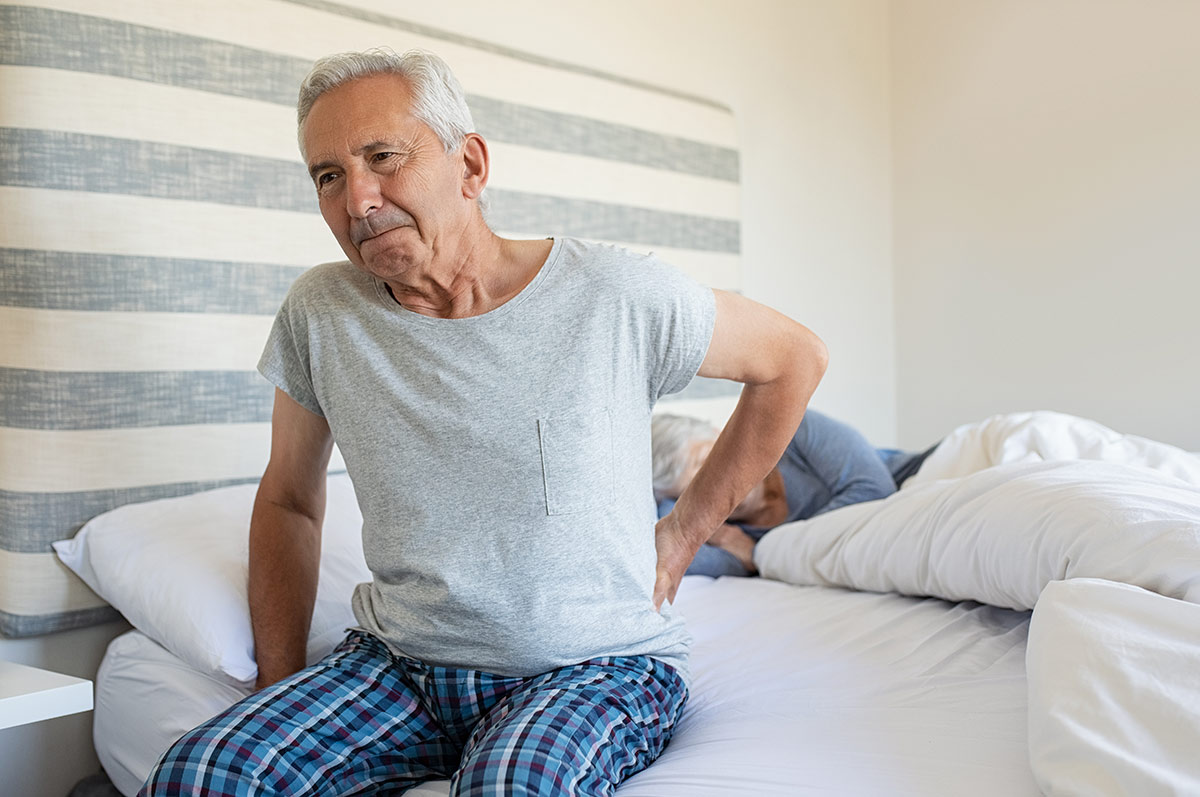Book an assessment with Zoomers now!
Use our online booking tool to find a time that works for you!
Approximately 80% of Halifax seniors will experience back pain at some point in their lives. Back pain can interfere with Halifax seniors’ ability to participate in their activities of daily living such as housekeeping and gardening. It can also make other activities like work, sports or spending time with grandchildren difficult.
Halifax seniors can experience lower back pain for a number of reasons. A common culprit that causes seniors to have back pain is excessive, repetitive and/or prolonged flexion (or forward bend) of the lower back. When the body is flexed (or bent) forward, the spine and its associated soft tissues are in a relatively weak position which can leave them vulnerable to injury.
Of course, the body needs to be able to bend forward throughout the day. The back is designed for forward bend and can be remarkably resilient even when overused for a day or two. However, if the volume or intensity of forward bending activities goes beyond what their back can handle, Halifax seniors are at risk of developing pain and injury. That’s the bad news.
The good news is, there is a relatively easy movement pattern fix: the hip hinge.
By using the hip hinge is a movement pattern, Halifax seniors can use their hips to do the majority of the movement required to bend forward instead of their backs. As a result, it spares the spine the stress of flexing as much or as often. Using the hip hinge movement can reduce Halifax seniors’ risk of developing lower back pain. It can also be a game-changer in terms of reducing existing back pain and maximizing activity participation after injury.
To use the hip hinge movement, seniors must be able to stand in a neutral spine position. To achieve this position when standing upright, the shoulders should be gently set back on the ribcage and there should have a slight inward curve in the neck and lower back. Once in the neutral position, the hip hinge can be initiated.
Seniors should first soften their knees with a slight bend and then tilt forward from their hips, maintaining the small inward curvature of the lower back. When moving this way, a broomstick held against the body would maintain contact with the head, shoulders and tailbone throughout the movement. By keeping the spine in a neutral position as the hips hinge, Halifax seniors can bend forward while avoiding excessive flexion of the spine.
If that seems complicated, seniors can pay attention to the way they sit down and get back up. In this movement, they will automatically use a hip hinge to get their hips back over the seat before they sit down. As they stand up, their body will naturally lean forward, moving in a reverse hip hinge movement.
For seniors in Halifax, the hip hinge is as useful on the golf course as it is in the garden and when emptying their clothes dryer. It is a key movement pattern that can be used to maximize function and minimize the risk of developing back pain.
Physiotherapists can be a great resource to fine-tune this hip hinge technique so that seniors can reduce their risk of developing back pain. Physiotherapists can also help Halifax seniors with back pain learn how to use this technique to improve their comfort during their recovery from a bout of back pain.
Zoomers physiotherapists regularly use the hip hinge movement pattern in their treatment programs with Halifax seniors to help them stay maximally mobile and comfortable. Book an assessment with a Zoomers physiotherapist to find out if the hip hinge movement is a solution that can work for you!
Book an assessment with Zoomers
Use our online booking tool to find a time that works for you!


